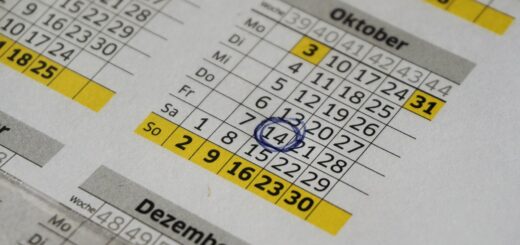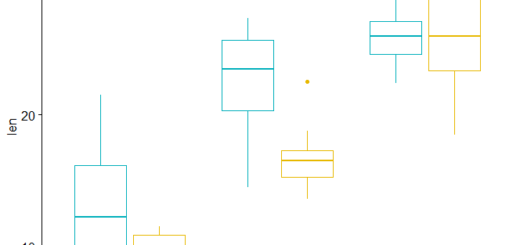Class Imbalance-Handling Imbalanced Data in R
Handling Imbalanced Data in R, Class Imbalance classification refers to a classification predictive modeling problem where the number of observations in the training dataset for each class is not balanced.
In other words, the class distribution is not equal or close and it is skewed into one particular class. So, the prediction model will be accurate for skewed classes and we want to predict another class then the existing model won’t be appropriate.
The imbalance problems may be due to biased sampling methods or may be due to some measurement errors or unavailability of the classes.
Let’s look at one of the datasets and how to handle the same in R.
Load Library
library(ROSE) library(randomForest) library(caret) library(e1071)
Getting Data
data <- read.csv("D:/RStudio/ClassImBalance/binary.csv", header = TRUE)
str(data) The dataset you can access from here. Total 400 observations and 4 variables contains in the dataset.
'data.frame': 400 obs. of 4 variables:
$ admit: int 0 1 1 1 0 1 1 0 1 0 …
$ gre : int 380 660 800 640 520 760 560 400 540 700 …
$ gpa : num 3.61 3.67 4 3.19 2.93 3 2.98 3.08 3.39 3.92 …
$ rank : int 3 3 1 4 4 2 1 2 3 2 …
Let’s convert the admit variable into factor variable for further analysis.
data$admit <- as.factor(data$admit) summary(data)
admit gre gpa rank
0:273 Min. :220.0 Min. :2.260 Min. :1.000
1:127 1st Qu.:520.0 1st Qu.:3.130 1st Qu.:2.000
Median :580.0 Median :3.395 Median :2.000
Mean :587.7 Mean :3.390 Mean :2.485
3rd Qu.:660.0 3rd Qu.:3.670 3rd Qu.:3.000
Max. :800.0 Max. :4.000 Max. :4.000
Based on summary data 273 observations pertaining to not admitted and 127 observations pertained to students admitted in the program.
Paired t test tabled value vs p value
Class Imbalance
barplot(prop.table(table(data$admit)), col = rainbow(2), ylim = c(0, 0.7), main = "Class Distribution")

Based on the plot it clearly evident that 70% of the data in one class and the remaining 30% in another class.
So big difference observed in the amount of data available. If we are making a model based on these a dataset accuracy predicting students not admitted will be higher compared to students who are admitted.
Data Partition
Lets partition the dataset into train dataset and test dataset based on set.seed.
set.seed(123) ind <- sample(2, nrow(data), replace = TRUE, prob = c(0.7, 0.3)) train <- data[ind==1,] test <- data[ind==2,]
Predictive Model Data
Let create a model based on the training dataset and look at the classification in the training dataset.
table(train$admit) 0 1 188 97
You can see that 188 observations in class 0 and 97 observations in class 1.
prop.table(table(train$admit))
Based on proportion table 65% in one class and 34% in another class.
summary(train)
admit gre gpa rank
0:188 Min. :220.0 Min. :2.260 Min. :1.000
1: 97 1st Qu.:500.0 1st Qu.:3.120 1st Qu.:2.000
Median :580.0 Median :3.400 Median :2.000
Mean :582.4 Mean :3.383 Mean :2.502
3rd Qu.:660.0 3rd Qu.:3.640 3rd Qu.:3.000
Max. :800.0 Max. :4.000 Max. :4.000Predictive Model
The Random Forest model is using for prediction purposes.
rftrain <- randomForest(admit~., data = train)
Predictive Model Evaluation with test data
Let’s cross-validate based on test data. In this case, we are mentioning positive=1.
confusionMatrix(predict(rftrain, test), test$admit, positive = '1')
Confusion Matrix and Statistics
Reference Prediction 0 1 0 69 22 1 16 8 Accuracy : 0.6696 95% CI : (0.5757, 0.7544) No Information Rate : 0.7391 P-Value [Acc > NIR] : 0.9619 Kappa : 0.0839 Mcnemar's Test P-Value : 0.4173 Sensitivity : 0.26667 Specificity : 0.81176 Pos Pred Value : 0.33333 Neg Pred Value : 0.75824 Prevalence : 0.26087 Detection Rate : 0.06957 Detection Prevalence : 0.20870 Balanced Accuracy : 0.53922 'Positive' Class : 1
Now you can see that model is around 66% and based on 95% confidence interval accuracy is lies between 57 & to 75%.
Sensitivity also is around only 30%, we can clearly mention that one of the classes is dominated over another class. Suppose if you’re interested in zero class then this model is quite a good one and if you want to predict class 1 then need to improvise the model.
Over Sampling
over <- ovun.sample(admit~., data = train, method = "over", N = 376)$data table(over$admit) 0 1 188 188
This is based on resampling and now both the classes are equal.
summary(over) admit gre gpa rank 0:188 Min. :220.0 Min. :2.260 Min. :1.000 1:188 1st Qu.:520.0 1st Qu.:3.167 1st Qu.:2.000 Median :580.0 Median :3.450 Median :2.000 Mean :589.8 Mean :3.417 Mean :2.441 3rd Qu.:665.0 3rd Qu.:3.650 3rd Qu.:3.000 Max. :800.0 Max. :4.000 Max. :4.000
Random Forest Model
rfover <- randomForest(admit~., data = over) confusionMatrix(predict(rfover, test), test$admit, positive = '1')
Confusion Matrix and Statistics
Reference
Prediction 0 1
0 54 14
1 31 16
Accuracy : 0.6087
95% CI : (0.5133, 0.6984)
No Information Rate : 0.7391
P-Value [Acc > NIR] : 0.99922
Kappa : 0.1425
Mcnemar's Test P-Value : 0.01707
Sensitivity : 0.5333
Specificity : 0.6353
Pos Pred Value : 0.3404
Neg Pred Value : 0.7941
Prevalence : 0.2609
Detection Rate : 0.1391
Detection Prevalence : 0.4087
Balanced Accuracy : 0.5843
'Positive' Class : 1 Now the accuracy is 60% and sensitivity is increased to 50%. Suppose our interest is predicting class 1 this model is much better than the previous one.
Under Sampling
under <- ovun.sample(admit~., data=train, method = "under", N = 194)$data table(under$admit) 0 1 97 97
Instead of using all observations will take relevant observations from class zero respected to class1.
Suppose class 1 contain97 observations we need to take only 97 observations from class 0.
rfunder <- randomForest(admit~., data=under) confusionMatrix(predict(rfunder, test), test$admit, positive = '1')
Confusion Matrix and Statistics
Reference Prediction 0 1 0 48 11 1 37 19 Accuracy : 0.5826 95% CI : (0.487, 0.6739) No Information Rate : 0.7391 P-Value [Acc > NIR] : 0.999911 Kappa : 0.1547 Mcnemar's Test P-Value : 0.000308 Sensitivity : 0.6333 Specificity : 0.5647 Pos Pred Value : 0.3393 Neg Pred Value : 0.8136 Prevalence : 0.2609 Detection Rate : 0.1652 Detection Prevalence : 0.4870 Balanced Accuracy : 0.5990 'Positive' Class : 1
Now you can see that accuracy reduced by 58% and sensitivity increased to 63%.
Under-sampling is not suggested because the number of data points less in our model and reduces the overall accuracy.
How to integrate SharePoint & R
Both (Over & Under)
both <- ovun.sample(admit~., data=train, method = "both", p = 0.5, seed = 222, N = 285)$data table(both$admit) 0 1 134 151
This table is not exactly equal but similar to original situation class1 is higher than class 0.
rfboth <-randomForest(admit~., data=both) confusionMatrix(predict(rfboth, test), test$admit, positive = '1')
Confusion Matrix and Statistics
Reference Prediction 0 1 0 40 9 1 45 21 Accuracy : 0.5304 95% CI : (0.4351, 0.6241) No Information Rate : 0.7391 P-Value [Acc > NIR] : 1 Kappa : 0.1229 Mcnemar's Test P-Value : 1.908e-06 Sensitivity : 0.7000 Specificity : 0.4706 Pos Pred Value : 0.3182 Neg Pred Value : 0.8163 Prevalence : 0.2609 Detection Rate : 0.1826 Detection Prevalence : 0.5739 Balanced Accuracy : 0.5853 'Positive' Class : 1
Model accuracy is 53% and sensitivity is 70%.
Now sensitivity is increased into 70% compared to previous model.
Naïve Bayes Classification in R
ROSE Function
rose <- ROSE(admit~., data = train, N = 500, seed=111)$data table(rose$admit) 0 1 234 266 summary(rose)
When we do rose function closely watch the minimum and maximum values of each variable.
admit gre gpa 0:234 Min. :130.0 Min. :2.186 1:266 1st Qu.:502.9 1st Qu.:3.127 Median :587.0 Median :3.401 Mean :589.7 Mean :3.389 3rd Qu.:684.2 3rd Qu.:3.673 Max. :887.2 Max. :4.595 rank Min. :-0.6079 1st Qu.: 1.5553 Median : 2.3204 Mean : 2.3655 3rd Qu.: 3.1457 Max. : 4.9871
Recollect when we created summary based on original data gre maximum value is 800 based on the rose function it’s increased into 887.
This won’t make any changes in the model but we need-aware about these changes and we can make use of this function for further analysis.
rfrose <- randomForest(admit~., data=rose) confusionMatrix(predict(rfrose, test), test$admit, positive = '1')
Confusion Matrix and Statistics
Reference Prediction 0 1 0 36 12 1 49 18 Accuracy : 0.4696 95% CI : (0.3759, 0.5649) No Information Rate : 0.7391 P-Value [Acc > NIR] : 1 Kappa : 0.0168 Mcnemar's Test P-Value : 4.04e-06 Sensitivity : 0.6000 Specificity : 0.4235 Pos Pred Value : 0.2687 Neg Pred Value : 0.7500 Prevalence : 0.2609 Detection Rate : 0.1565 Detection Prevalence : 0.5826 Balanced Accuracy : 0.5118 'Positive' Class : 1
Based on this model accuracy is come down and sensitivity also reduced in this model.
But some other data set models can perform better. For getting repetitive results every time you can make use of seed function everywhere.
Conclusions.
Sensitivity is always closer to 100 is better, this is the way we can handle class imbalance problems efficiently & smartly.




